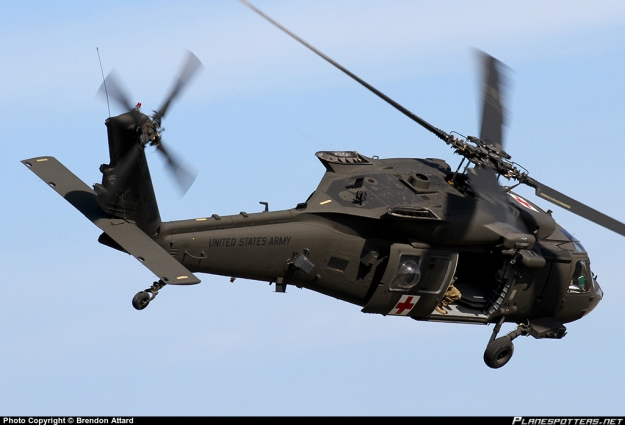Recognizing the Mechanics and Engineering Behind Uh 60 Helicopters
The UH-60 helicopter, commonly known as the Black Hawk, stands as a pinnacle of contemporary rotorcraft innovation, symbolizing a mix of durable design and complex auto mechanics. As we peel off back the layers of the UH-60's style, a globe of complex systems and careful engineering comes to light.
History of UH-60 Helicopters
The background of UH-60 helicopters traces back to the late 1970s when the United States Army looked for a functional and innovative utility helicopter to change its aging fleet. In action to this requirement, the Sikorsky Aircraft Firm created the UH-60 Black Hawk helicopter. Introduced in 1979, the UH-60 quickly came to be a staple in army operations due to its impressive capacities.
The UH-60 was created to master a variety of goals, consisting of troop transport, clinical emptying, electronic war, and unique operations. Its capacity to adapt to various duties made it an important asset to the U.S. uh 60. Military and other army forces around the globe
For many years, the UH-60 platform has actually gone through several upgrades and variants to enhance its efficiency and equal developing goal requirements. These helicopters have actually seen substantial solution in disputes such as the Gulf Battle, Afghanistan, and Iraq, showcasing their reliability and convenience in varied operational settings. The UH-60's rich background is a testimony to its enduring tradition as a premier energy helicopter.

Engine and Power Systems
Utilizing cutting-edge propulsion technology, UH-60 helicopters are equipped with innovative engine and power systems to make sure ideal performance and reliability in an array of functional situations. The UH-60, typically called the Black Hawk, is powered by 2 General Electric T700-GE-701D engines, each with the ability of providing up to 1,940 shaft horsepower. These turboshaft engines give the needed thrust for the helicopter to accomplish its goals efficiently, including army transport, clinical emptying, and combat assistance.

Rotor System and Aerodynamics
How do the blades system and the rules of aerodynamics of UH-60 helicopters add to their functional performance and trip abilities? The rotor system of the UH-60 helicopter plays a vital function in supplying lift and propulsion. The UH-60 features a four-bladed, totally expressed blades system that permits high ability to move and security during flight. This layout makes it possible for the helicopter to execute a vast variety of objectives, from transport and medical discharge to battle procedures.
The rules of aerodynamics likewise play a key duty in the efficiency of UH-60 helicopters. The streamlined body and rotor blade layout lower drag, permitting the helicopter to accomplish greater rates and better gas effectiveness. The aerodynamic layout of the UH-60 likewise adds to its capability to operate in varied environmental problems, including warm temperatures and high elevations.
Avionics and Flight Control Equipment

In its complex control with the rotor system and aerodynamics of UH-60 helicopters, the avionics and trip control systems create a crucial network of innovations forming the aircraft's operational abilities. In the UH-60, these systems consist of electronic screens, interaction radios, GPS navigation, weather radar, and autopilot systems.
The trip control systems of the UH-60 are in charge of converting the pilot's inputs into the appropriate adjustments to the rotor system, great site making sure steady trip and ability to move. These systems include hydraulic actuators, servos, and computer systems that function with each other to regulate the tail and major blades, along with various other trip control surface areas. By specifically taking care of the helicopter's trip characteristics, these systems allow pilots to carry out a wide variety of goals, from transportation and search-and-rescue to deal with procedures, with accuracy and confidence.
Function and Applications in Aviation
Avionics systems in UH-60 helicopters incorporate a range of electronic systems that help in navigating, communication, monitoring, and managing different aircraft functions. These systems include electronic displays, autopilot systems, interaction radios, GPS navigation tools, and weather radar. Additionally, these systems integrate security attributes such as autopilot modes, surface recognition cautioning systems, and security enhancement systems to enhance the general safety and security and operational capabilities of the UH-60 helicopters in different goals, including troop transport, clinical discharge, search and rescue, and airborne firefighting.
Conclusion
Finally, the UH-60 helicopter is a functional aircraft with a rich history and advanced design. Its engine and power systems, blades system, aerodynamics, avionics, and flight control systems all work with each other to make it a reputable and reliable maker. The UH-60's duty and applications in aeronautics are vast, ranging from army operations to browse and rescue objectives. Its continued advancement and usage show its relevance in the area of aeronautics (uh 60).
In its elaborate coordination with the rotor system and aerodynamics of UH-60 helicopters, the avionics and flight control systems create an important network of technologies forming the airplane's functional capacities.The trip control systems of the UH-60 are liable for equating the pilot's inputs into the suitable adjustments to the blades system, making certain secure flight and maneuverability. Avionics systems in UH-60 helicopters encompass an array of electronic systems that aid in navigation, interaction, tracking, and controlling various airplane functions. Additionally, these systems include security features such as auto-pilot settings, terrain recognition cautioning systems, and security augmentation systems to boost the general security and operational capabilities of the UH-60 helicopters in different missions, consisting of troop transport, clinical evacuation, search and rescue, and go to my blog airborne firefighting.
Its engine and power systems, rotor system, the rules of aerodynamics, avionics, and flight control systems all function together find out to make it a reputable and efficient equipment.